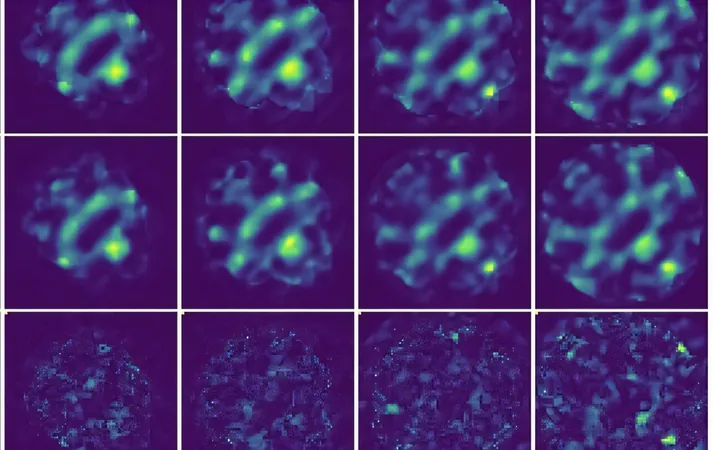
Revolutionary AI Model Takes 4D STEM Imaging to New Heights for Delicate Materials!
2024-10-23
Author: Daniel
Introduction
Researchers at Monash University have unveiled a groundbreaking artificial intelligence (AI) model that is set to transform the field of four-dimensional scanning transmission electron microscopy (4D STEM) by enhancing the accuracy of imaging delicate materials. This cutting-edge advancement, referred to as unsupervised deep denoising, promises to be a game-changer for the analysis of materials that are particularly sensitive to damage during imaging, particularly those integral to the development of batteries and solar cells.
Collaboration and Research
The collaborative effort, championed by the esteemed teams in Monash University's School of Physics and Astronomy and the Monash Center of Electron Microscopy, introduces a sophisticated machine learning technique tailored for denoising extensive electron microscopy datasets. Their findings, recently published in the reputable journal npj Computational Materials, underscore the significance of this research in modern material science.
Challenges in 4D STEM Imaging
For scientists, 4D STEM represents an invaluable tool that provides unprecedented insight into the atomic structure of materials. However, a considerable hurdle arises when working with fragile samples susceptible to harm from the electron beams employed in imaging. To counter this, researchers often resort to using reduced electron doses. Unfortunately, this compromise leads to significantly noisier and less discernible images, posing challenges for accurate structural analysis.
The Breakthrough AI Model
In a significant breakthrough, the Monash research team developed an innovative solution: a deep learning model specifically designed to "denoise" the 4D STEM images, dramatically enhancing their clarity. Lead author Dr. Alireza Sadri, a postdoctoral fellow at Monash's School of Physics and Astronomy, highlights the implications of this advancement. "Our new AI model dramatically improves the clarity of 4D STEM images, allowing us to study delicate materials that were previously too sensitive for detailed analysis," he asserts. "By reducing noise in low-dose imaging, we're broadening the spectrum of materials available for study, potentially leading to groundbreaking developments in areas like nanotechnology and advanced electronics."
How the AI Model Works
The intricacy of the new AI model lies in its capability to understand the relationship between the position of the electron beam and the resulting scattering patterns generated as it traverses the material. By streamlining the complexity of its network, this model adeptly identifies and focuses on regular patterns within the signal while filtering out random noise. The net result is a refined output of clearer and more accurate images that facilitate a deeper understanding of the material’s properties.
Operational Benefits
Remarkably, the model operates without needing pre-labeled data, which means it can function effectively regardless of prior information concerning the material under investigation. This innovation is not just a technological leap; it holds immense promise for future explorations in material sciences, with potential applications reaching far into next-generation electronics and sustainable energy technologies.
Conclusion
As the boundary between AI and material science continues to blur, the implications of this research could resonate across both academic and industrial sectors, ushering in a new era of material research that prioritizes precision, detail, and practicality. Stay tuned, as this might just be the start of astonishing discoveries in the world of delicate materials!

 Brasil (PT)
Brasil (PT)
 Canada (EN)
Canada (EN)
 Chile (ES)
Chile (ES)
 España (ES)
España (ES)
 France (FR)
France (FR)
 Hong Kong (EN)
Hong Kong (EN)
 Italia (IT)
Italia (IT)
 日本 (JA)
日本 (JA)
 Magyarország (HU)
Magyarország (HU)
 Norge (NO)
Norge (NO)
 Polska (PL)
Polska (PL)
 Schweiz (DE)
Schweiz (DE)
 Singapore (EN)
Singapore (EN)
 Sverige (SV)
Sverige (SV)
 Suomi (FI)
Suomi (FI)
 Türkiye (TR)
Türkiye (TR)